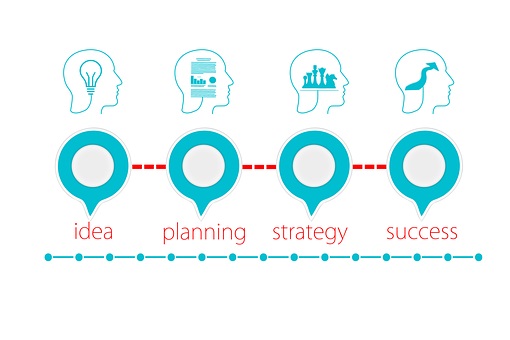Live Chat Software by Kayako |
|
Feb 28 |
Activate Your Customer with Content
Posted by Meredith on 28 February 2020 11:33 am |
|
What does it mean to activate your customer? It means getting them motivated to make the next step in the customer life cycle. This could mean visiting your website, clicking on an ad, sharing a social media post, and hopefully making a purchase. To activate your customer with content, you need to make them feel attached to your brand, your business. How do you do that?
In the digital age, there are so many opportunities to activate your customers with content. Content can be created through blogging, social media, videos, pictures. And these are ways to activate your customers:
Each customer is different, and each one has a problem that needs solving. By creating all of this content, not only are you activating your customer, but creative content resonates with consumers, so implementing these tips should improve your marketing strategy and help to out perform your competitors. Your company’s branding and marketing strategies must span consistently across all media channels—and be designed to drive traffic back to your website. Contact Webtivity Marketing & Design to schedule a consultation.
The post Activate Your Customer with Content appeared first on Webtivity Marketing & Design. Read more » | |
|
Jan 3 |
Does my Website Need to be ADA Compliant?
Posted by Didier Bizimungu on 03 January 2020 01:41 pm |
For our purposes, Title III of the ADA deals with public accommodations and commercial facilities that include websites. Title III is enforced as a strict liability law by the U.S. Department of Justice. That means there are little to no excuses to be uncompliant. Web accessibility is an evolving set of requirements with no formal agreed-upon set of standards. Although not legally sourced, courts have referenced WCAG 2.0 in cases involving the ADA. What are the Dangers of Being Non-compliant? As of now, the Department of Justice has not independently pursued website owners for being Title III uncompliant. However, individuals affected by perceived non-compliant websites have sued website owners pursuing injunctive relief (e.g., for the company to make its website ADA accessible) and attorneys’ fees. ADA lawsuits have shown a marked increase in the past few years. 2017 saw 814 ADA lawsuits while 2018 saw that number rise to 2285 cases. Although 2019 numbers are not out yet, it will exceed 2018. Who is Most at Risk of Legal Challenges? The rise in ADA related cases has led increasingly to more and more industries being affected. Due to their close interactions with the general publi Top industries targeted by ADA lawsuits include real estate, retail, travel, entertainment, and foodservice. The list keeps growing as precedents keep being set by previous cases. A significant portion of the cases, 55%, in 2019 settled within just 60 days. It is often uneconomical to fight these legal challenges and come out victoriously. What are the Benefits to Being ADA Compliant?
ADA compliance forces a website to comfort to the highest Search Engine Optimization standards. The increased rankings will garner more business for compliant websites. Disabled and other users alike view brands with compliant websites in a more positive light compared to their inaccessible counterparts. Websites built with WCAG guidelines tend to be easier to navigate, increasing positive user experience. Finally, making efforts to be ADA compliant will protect website owners from being on the wrong end of legal action. How to Test for Being ADA Compliant It remains incredibly difficult to ensure full ADA compliance. The WCAG is a best-case scenario set of guidelines. The World Wide Web Consortium (W3C) maintains a list of tools that can assist in ascertaining the level of WCAG compliance. They do not claim that any single tool is representative of fulfilling all of the guidelines’ requirements. A full evaluation of every page of a website is the only approach that ensures that all parts meet the WCAG guidelines. How to Become ADA Compliant in 5 Easy Steps Easy here is subjective. The steps to make a website ADA compliant are simple yet require huge amounts of labor depending on the size of a website.
Depending on the results, the current legal environment will change in terms of the legal culpability of ADA compliance. However, this is likely to be limited to specific websites; in this case, retailers with physical fronts. ADA compliance is here to stay. It behooves any website, specifically public-facing websites, to endeavor to be as compliant as possible to web accessibility standards. Is your website ready to be ADA compliant? Webtivity Marketing & Design is here to guide you through the process of ensuring your website conforms to the highest web standards. Reach out to us at (941) 753-7574 or send us a message for an immediate answer. The post Does my Website Need to be ADA Compliant? appeared first on Webtivity Marketing & Design News. Read more » | |
|
Nov 18 |
Make Your Location Page Work for Your Business Website
Posted by Meredith on 18 November 2019 03:20 pm |
|
Every business is trying to jump to the top of Google’s search results. With everyone vying for that top spot, it’s important to take each page of your business website, and position it for the best results possible. People are always searching for something “near me” and you can’t just keyword load “near me” or “close to me” in all the pages of your website. Here are some tips to make your location page work harder for your business website. Business Name, Address, and Phone Number Be sure that your Business Name, Address, and Phone Number appear exactly the same as it does on your Google My Business Profile, as well as all other citations you have claimed. Photos Include photos in your location page, with correct ALT tags. Don’t just have outdoor photos, have photos showing the interior of your business as well. This allows potential customers to see what to expect when they arrive. Exterior photos should include your sign, a parking lot, as well as nearby businesses; this is especially helpful for new businesses and if your business is in a strip mall. Describe Business Location Include your business location, and what makes your location unique. If you have several locations, don’t just copy and paste the same info while changing out the city. CTA (Call to Action) Options Use CTA’s which are helpful to the user such as directions with a link to Google Maps, a link to request an appointment, a button to shop now, or a call now button. Directions When you’re including directions to your business, it’s an excellent way to add some geographically specific keywords to your page. Optimize for SEO Be sure to optimize the location page for SEO. This includes images, the title, and the meta data of course. The meta data will be used for the SERP (Search Engine Results Page), so it should include your brand, the location keyword, as well as your keyword; all of which should have been in the title too. The meta data allows a bit more space for extra selling tips! Your website is your 24/7 sales tool so your website must be ready to receive visitors and convert traffic into sales. We work with you to understand how you approach your business and industry, your customer acquisition tactics, and most importantly your competitors and how you position yourself against them. With this information we solidly position your business online and become your partner in success. Show your business to the world with Webtivity Marketing & Design!
The post Make Your Location Page Work for Your Business Website appeared first on Webtivity Marketing & Design News. Read more » | |
|
Apr 9 |
The Internet is Dead!
Posted by Troy Newport on 09 April 2014 07:45 am |
|
In the headline-driven web and the bumper sticker world in which we live, misinformation is all around us. Bloggers and news websites write candy-coated headlines to try to entice the all-important click to their website, and information consumers are so inundated with noise they don’t take the time to truly read any longer. In the olden days (oh yeah I’m feeling old now) people would read the newspaper front to back. It was their daily source of written media and they would take the time to read it cover to cover. Now we glance at our social media and blog feeds and scroll past tens and hundreds of messages per day all competing for our attention. As such bloggers and news sites have to write headlines that make you stop and click. You’ll see things like “The Internet is Dead” and other bold headlines that make you go hmmm. But then if you actually click through and read the story you’ll find toward the end of the story the writer may say something like, “So the internet isn’t REALLY dead, but…” and spin the story to fit the headline. Sometimes I get mad when I actually get to the point of the story because I feel like I was duped into reading something that wasn’t really about the topic I thought it was in the first place. Kind of like people who saw my title, “The Internet is Dead” and thought it may be some thought-provoking article from an internet marketing company about how our industry is dying. (Sorry folks, but the internet is here to stay so you’d better learn how to leverage it for your business.) Unfortunately these misleading headlines make it extremely difficult for information consumers to sort through the noise and make judgements as to whether the information they scan is accurate. If our technology channels are molding a “scanning culture” I wonder how our children will fare in processing and learning new information? People like me who grew up in the old-style media and is immersed in the new media understands what has happened. That’s why when I see a ridiculous headline I immediately put my Skeptical Hat on and look for the angle in the story (after I actually read the whole story!) If children grow up scanning and not fully reading, vetting and comprehending, what will they actually learn? Does it change HOW they learn? That’s for people smarter than me to figure out, but I am smart enough to know we’re doing our kids a disservice if we don’t teach them how to navigate this crazy world we’ve created for them. The post The Internet is Dead! appeared first on . Read more » | |







